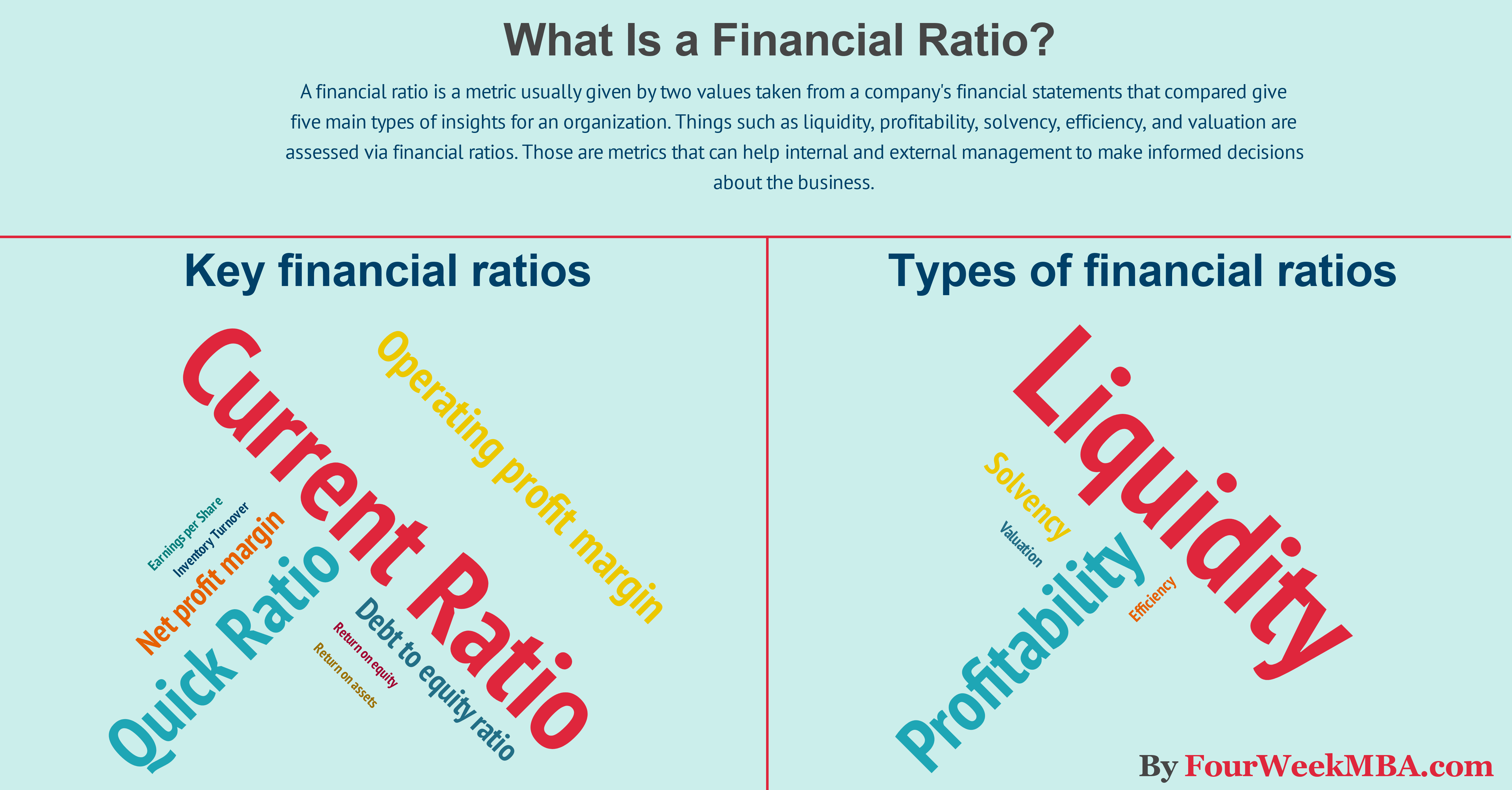| Not logged in : Login |
About: Financial ratio Goto Sponge NotDistinct Permalink

A financial ratio (or accounting ratio) is a relative magnitude of two selected numerical values taken from an enterprise's financial statements. Often used in accounting, there are many standard ratios used to try to evaluate the overall financial condition of a corporation or other organization. Financial ratios may be used by managers within a firm, by current and potential shareholders (owners) of a firm, and by a firm's creditors. Why are financial ratios useful at all? For several reasons. First, the simplicity. Financial ratios are extremely simple to use. Second, effectively. Even though they are simple to use they are also extremely effective. Third, the versatility of financial ratios. In fact, those ratios can be used for several purposes. Let's see how we can classify the main ratios: Liquidity Profitability Solvency Efficiency Valuation Each of those categories of financial ratios will answer to several questions. For instance, if you are about to undertake a business partnership with a supplier, you may want to make sure that supplier will be in business in the long run. Also, you can use solvency ratios (for instance debt/equity) to assess the health of the business. How can you measure liquidity? You can use liquidity ratios (such as Acid Test/Quick Ratio) to assess the long-term ability of the company to be in business. In other cases, you may want to know whether the company is doing well from the operational standpoint. How can you do that? Simple, you can use profitability ratios (such as net or gross margin) to assess how the company is using its resources to generate extra profits for the business. Also, you can use efficiency ratios (such as inventory or accounts receivable turnover) to assess how efficiently the business is managed. Other times you may need to assess the value of the business. In that case, valuation ratios (such as earnings per share, dividend yield) will help you out in doing that. https://fourweekmba.com/cash-conversion-cycle-amazon/
| Attributes | Values |
|---|---|
| type | |
| label |
|
| label |
|
| sameAs | |
| Description |
|
| depiction | |
| name |
|
| url | |
| http://www.w3.org/2007/ont/link#uri | |
| is References of |
|
| is Relation of |
Alternative Linked Data Documents: PivotViewer | iSPARQL | ODE Content Formats:
![[cxml]](/fct/images/cxml_doc.png)
![[csv]](/fct/images/csv_doc.png) RDF
RDF
![[text]](/fct/images/ntriples_doc.png)
![[turtle]](/fct/images/n3turtle_doc.png)
![[ld+json]](/fct/images/jsonld_doc.png)
![[rdf+json]](/fct/images/json_doc.png)
![[rdf+xml]](/fct/images/xml_doc.png) ODATA
ODATA
![[atom+xml]](/fct/images/atom_doc.png)
![[odata+json]](/fct/images/json_doc.png) Microdata
Microdata
![[microdata+json]](/fct/images/json_doc.png)
![[html]](/fct/images/html_doc.png) About
About


![[RDF Data]](/fct/images/sw-rdf-blue.png)
OpenLink Virtuoso version 08.03.3330 as of Mar 11 2024, on Linux (x86_64-generic-linux-glibc25), Single-Server Edition (7 GB total memory, 5 GB memory in use)
Data on this page belongs to its respective rights holders.
Virtuoso Faceted Browser Copyright © 2009-2024 OpenLink Software


